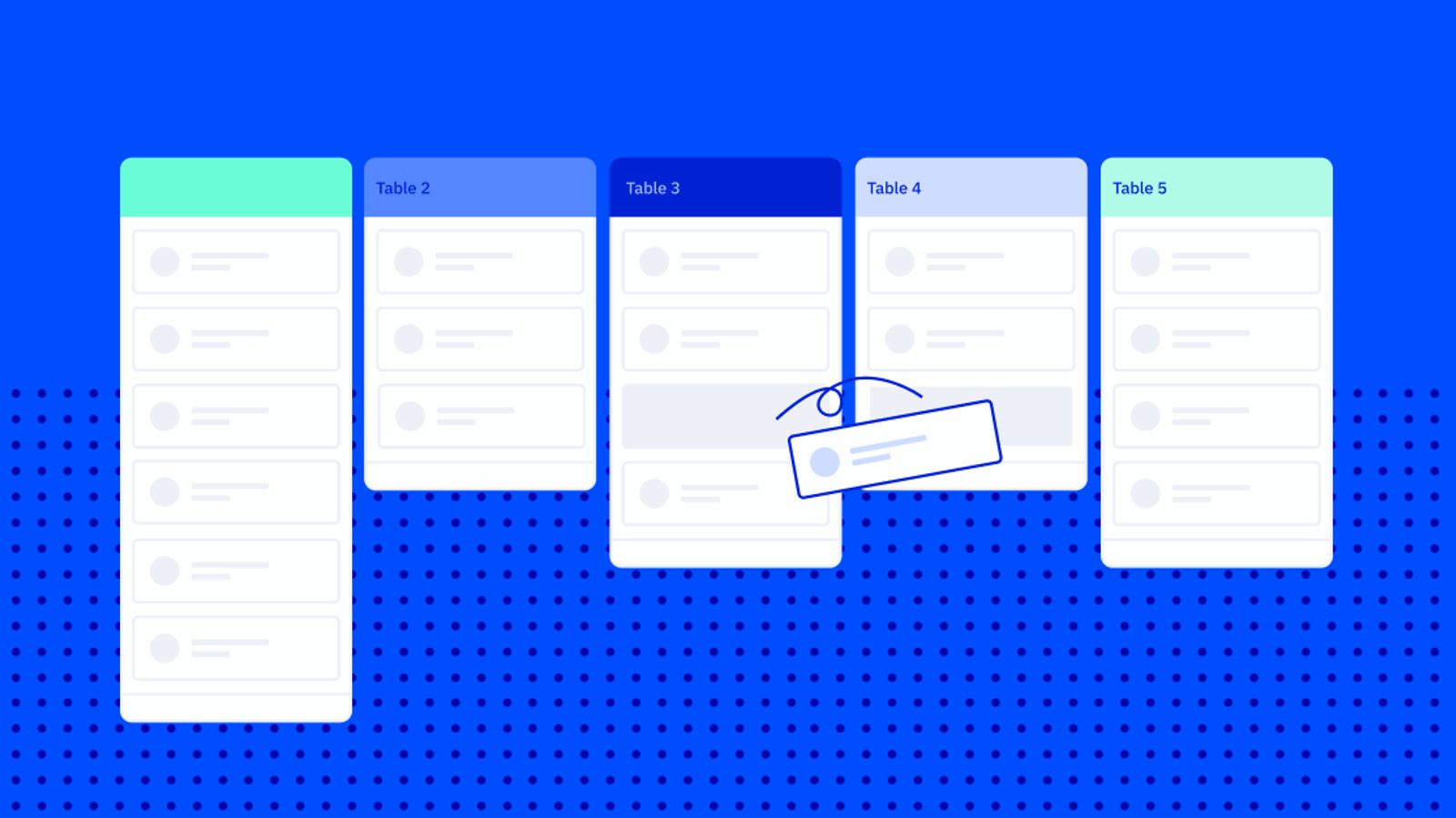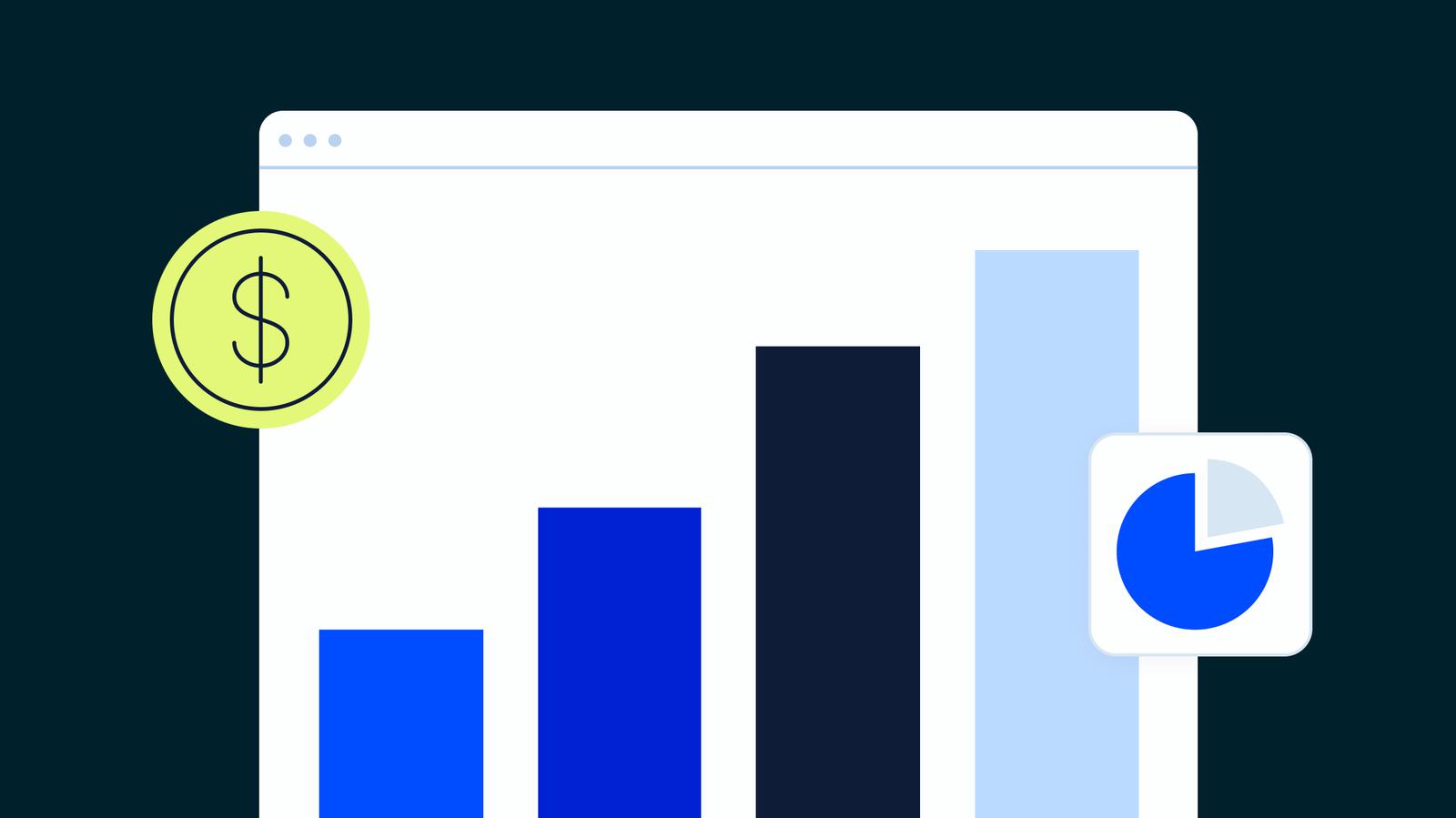The 20th century was a story of mass production.
Henry Ford perfected the first moving assembly line to crank out copies of the same car. Sam Walton, the founder of Walmart and Sam’s Club, mastered transportation and logistics to bring mass-produced products to inaccessible areas. The 20th century was about scale.
In the 21st century, we’ve shifted into a customer-focused economy. Manufacturing has scaled—commodity goods are everywhere. Making the same widget for every consumer isn’t enough to grow a business.
The 21st century is about personalization, custom experiences, and delivering what consumers want instead of simply what can be delivered.
A new age of business means you need a new way to understand your customers. Enter: the customer lifecycle.
Your customer lifecycle helps you show customers what they want to see, no matter where they are in the customer journey. When you nail your customer lifecycle, you know how to talk to potential customers who have just heard of your brand and your loyal advocates—and everyone in between.
This article will help you understand the customer lifecycle and how your business can reach customers at each stage.
Table of Contents
What is the customer lifecycle?
The customer lifecycle describes the stages consumers enter when they consider, purchase, and remain loyal buyers of your product or service. It outlines the customer’s progression through your marketing and sales cycle.
The customer lifecycle offers a complete picture of how people buy from businesses like yours—and shows you how your team should engage with customers in the buyer’s journey.
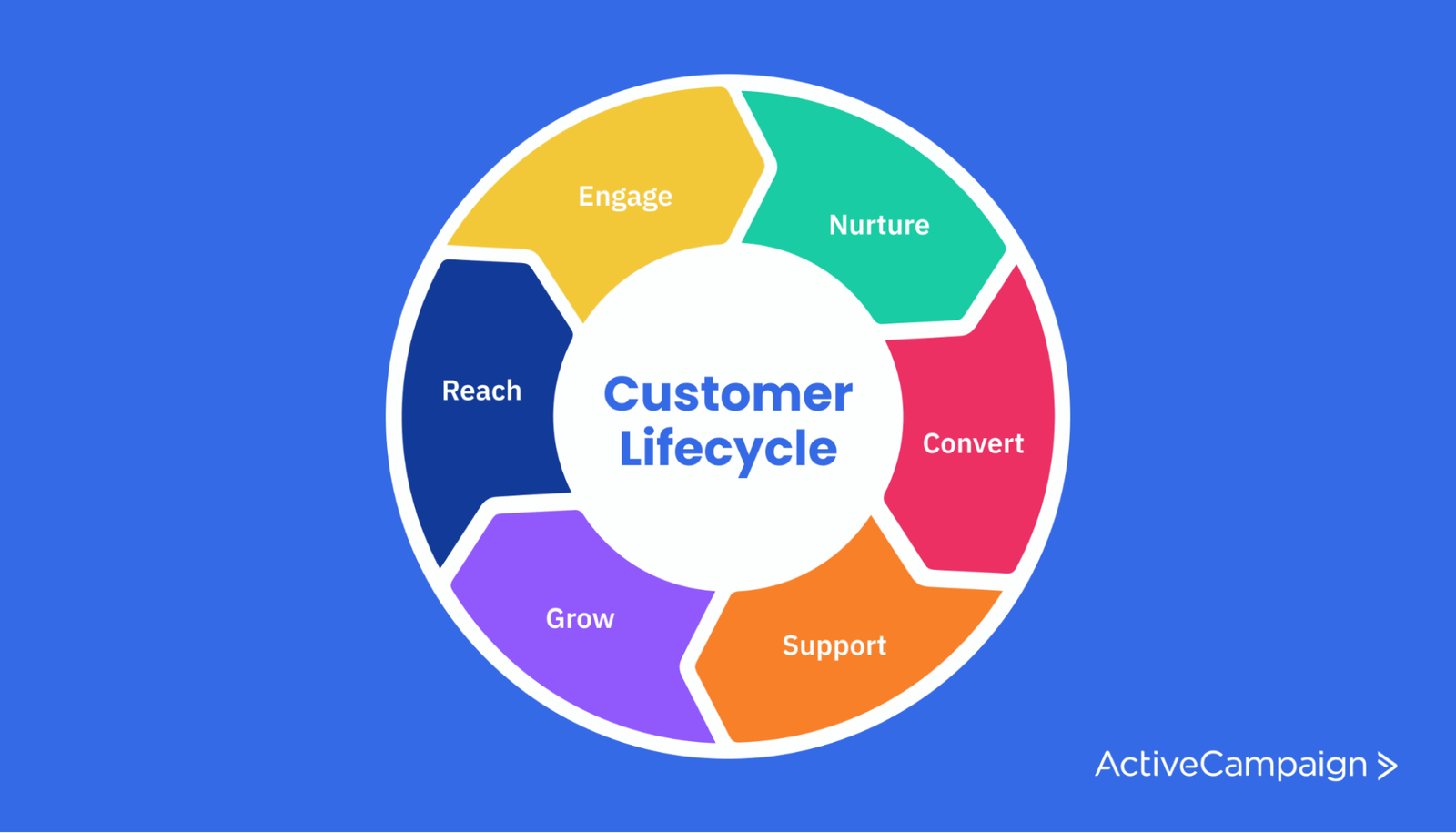
The customer lifecycle includes acquiring a new customer and the stages of your ongoing relationship: supporting a customer to retain their business, growing your relationship, and turning loyal customers into brand advocates.
Buyer’s journey vs. customer journey
When you talk about the customer lifecycle, the term “customer journey” is often used interchangeably. However, it should be noted that the customer journey differs from the buyer’s journey.
The buyer’s journey is the story of how someone first encounters your brand and becomes a customer. In short, the buyer’s journey ends when the customer makes a purchase.
Like the customer lifecycle, the customer journey spans the entire relationship with the customer, including initial contact and purchase and extending to retention, growth, and advocacy. The customer journey takes a longer view, accounting for repeat business and ongoing customer engagement.
What is customer lifetime value?
Part of why companies study and refine the customer lifecycle is that it has a significant impact on customer lifetime value (or customer lifecycle value). Customer lifetime value measures how much revenue a customer brings to your company over the entire relationship.
For example, if you acquire a new customer with a $100 purchase, that is only the revenue from this first transaction. If you retain this customer and they make repeat purchases, their customer lifetime value can be much more than $100.
Customer lifetime value is especially important for subscription and software-as-a-service (SaaS) businesses. The lifetime value of a customer depends on the company proving its value and continually providing great service.
Acquiring a customer costs more than retaining one, so increasing lifetime value often pays huge dividends. Understanding and improving the customer lifecycle is key to building customer loyalty and increasing customer lifetime value.
Why does the customer lifecycle matter?
Your customers don’t want the same thing as everyone else.
Not only do your customers want customization in their product purchases, but they also want a personalized customer experience throughout the entire buying experience. A Forrester study reported, "77% of consumers have chosen, recommended, or paid more for a brand that provides a personalized service or experience.”

The customer lifecycle offers a solid framework to bring personalization to your customer interactions. For instance, your customers choose:
- Product type
- Product color
- Product quantity
- Payment method
- Point of sale
- Shipping method
For example, Amazon customers can select the brand name, color, and size when buying shoes. They can purchase with a credit or debit card or use a gift card at checkout. Customers also have the option to decide where to ship the item. So, 1 shopper may buy black Nike shoes with a credit card, while another shopper may prefer buying red Reebok shoes with a debit card.
The customer lifecycle matters because your team can pinpoint where to add personalization within the buyer’s journey. More importantly, you can find ways to use marketing automation to help your team scale their personalization efforts.
How does customer lifecycle marketing help grow your business?
Customer lifecycle marketing is tailoring your marketing strategy to deliver on your brand promise at every stage of the customer lifecycle.
Expectations are high. Knowing your customers’ high expectations prepares your team to engage customers on the right channel with the right message at the right time.
In doing so, you offer more value to your customers—leading to more sales and an increase in customer retention. Lauren Heartsill Dowdle, an editor of ModernCompany, agrees:
“[If] you focus on providing value to your customers from the moment they reach out to you to the moment they make a purchase—and beyond—they’ll be much more likely to return to you the next time they’re in need of your services.”
Customer lifecycle marketing also helps increase operational efficiency. If you can identify opportunities to automate tasks, your team can focus its attention on more strategic work.
For example, Legacy Physical Therapy uses ActiveCampaign to build patients’ trust within the customer lifecycle. The business customizes lead magnets based on a patient’s specific pelvic condition, like prenatal pain or postpartum care. These free offers provide nervous patients with helpful information.

With ActiveCampaign, Legacy Physical Therapy can create as many automations as needed to deliver the right message to the right patient. Automating these tasks saves their team precious time.
What are the stages of the customer lifecycle?
While every company might have slightly different stages, at ActiveCampaign, we divide the customer lifecycle into the following 4 stages:
- Reach & Engage
- Nurture & Educate
- Convert & Close
- Support & Grow
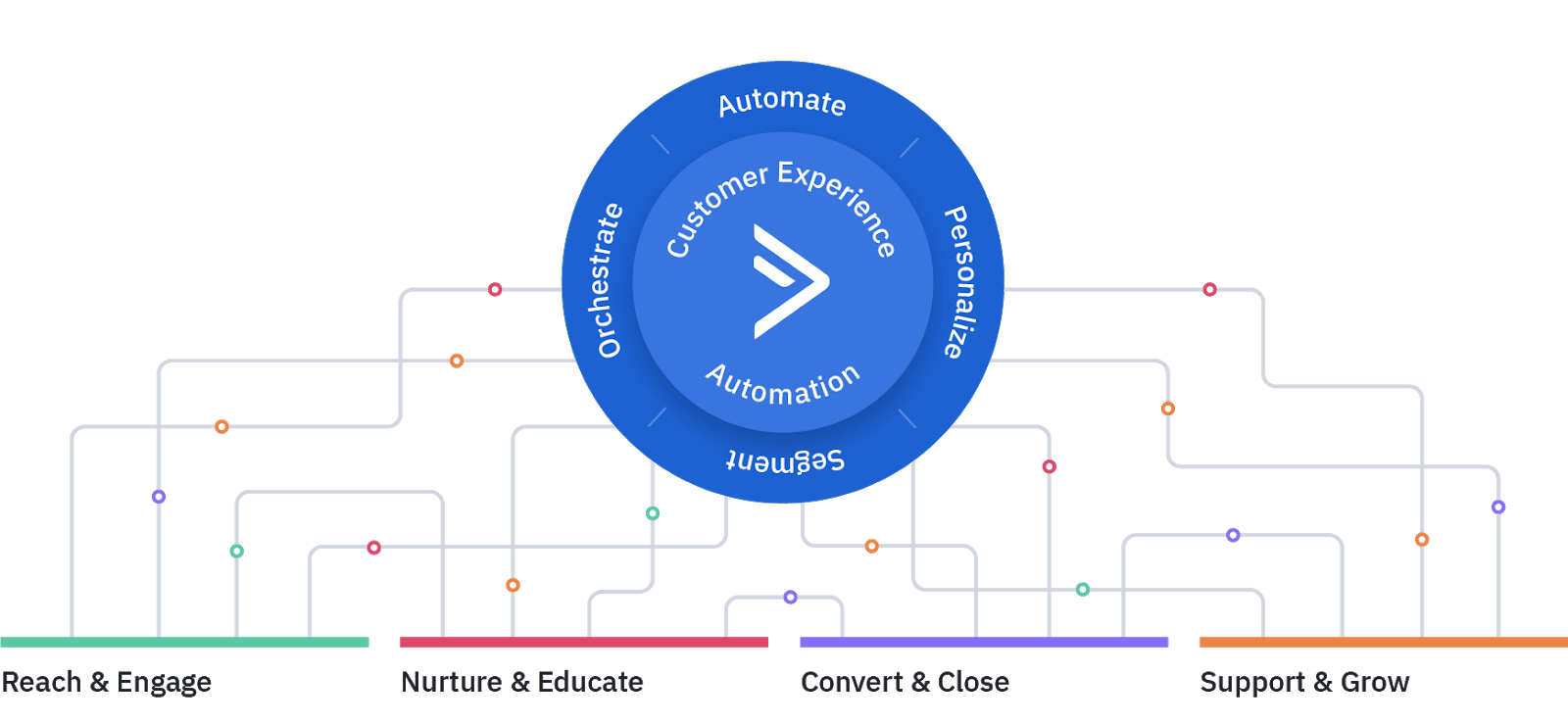
Let’s dive deeper into each stage and learn how a customer moves from learning about your brand to becoming an advocate who raves about your product.
Reach & engage
Consumers learn about your business in multiple ways.
- A visitor may land on your site after an industry influencer mentions your brand.
- A potential shopper may find your latest article in a quick Google search.
- You may get an influx of visitors because of your new Facebook ad campaign.
In this stage, your team’s focus is to craft a personalized message that grabs your audience’s attention. Then, with the help of site tracking, you see exactly what products and information they’re looking for. Once you know that, you can follow up to convert more customers.
Nurture & educate
Nowadays, it’s unlikely for a first-time visitor to land on your site, read your product information, and click ‘Add to Cart.’
Thanks to the Internet, your potential customers conduct research before making a purchasing decision. They’re reading reviews on third-party sites, searching your brand name on Twitter, and looking up your competitors to see what they have to offer.
So, your team must nurture the customer relationship by showing people exactly what they want to see. That means using dynamic content to send email subscribers the message they want to read. Doing this helps them learn how your product can address their needs.
Convert & close
After educating your consumers, sending a well-timed call-to-action (CTA) to close the sale is the next step.
But, how do you know who’s ready to buy?
Lead scoring gives your team the inside scoop by tracking your consumers’ engagement. Based on how people interact with your business—visit a page, open an email, or submit a form—you can follow up with the deals most likely to close.
It’s also important not to place unnecessary roadblocks in the purchasing process. For instance, do you require your shoppers to register with your site before checking out? This requirement could turn off eager consumers who prefer to check out as guests.
Support & grow
Congrats! You closed a deal on a new customer. While it’s tempting to move on to the next sale, your team should also focus on growing existing customer relationships. Happy customers will buy more of your products and tell their family and friends about the awesome customer experience.
You delight each customer by offering timely support and relevant product offers. For example, you can set up chatbot automations to gather information about customers before a live rep begins chatting. Or send text messages with flash sale notifications to your brand advocates.
How to manage the customer lifecycle
Since the customer lifecycle has such a significant impact on your revenue, retention, and business health, you should strive to manage it actively. That means investigating, recording, and analyzing the customer experience.
For most businesses, their customer relationship management (CRM) system will be vital for managing the customer lifecycle. When sales and customer success teams keep customer entries updated with important details and interactions, they can better look at the data in aggregate and identify problems. This is sometimes called customer lifecycle analysis.
To manage the customer lifecycle, you must understand the different stages of the customer lifecycle and analyze how those stages play out for your customer. Where do you fall short? Where are your biggest opportunities?
You should not just look at metrics. Behavioral analysis and customer interviews will give you important insights, as well. You can then experiment with changes and track how they affect results.
How do you reach customers at each stage of the customer lifecycle?
With more customer data at our fingertips, marketers quickly learn that it takes multiple brand interactions to get consumers to the checkout cart. Each stage of the customer lifecycle includes several key marketing channels for your team to nurture and persuade your audience.
What are the key channels within each customer lifecycle stage?
Customer lifecycle marketing centers around meeting the customer where they are. The channel defines where you will engage with your customers. Hundreds of marketing channels exist to help you reach, teach, sell, and grow your customer base, especially if you count both online and offline.
Fortunately, your team doesn’t need to focus on every possible channel. Instead, direct your attention to the key channels of your customers’ engagement. Like any effective marketing strategy, you’ll have to observe, test, and analyze each channel to understand what works for your brand.
It’s also important to note that channels aren’t exclusive to just 1 stage of the lifecycle. You can send product emails to teach your subscribers and deliver reward emails to grow your audience.
Here are a few examples of key channels in the customer lifecycle below.

Reach & engage channels
- Website
- Social media
- Pay-per-click advertising
- Events
Nurture & educate channels
- Sales call
- Live chat
- Content marketing
- Webinars
Convert & close channels
- Mobile push notifications
- Direct mail
- Email marketing
- Text messaging
Support & grow channels
- Community forum
- Customer support
- Email marketing
- Affiliate marketing
Optimize Your Customer Lifecycle
What are good examples of customer lifecycle marketing?
Effective lifecycle marketing creates an impactful experience for your customers. Here are some examples from notable brands to help you fine-tune your strategy.
1. Carvana reaches with promotional ads
Carvana runs sponsored Twitter ads to grab the attention of eager car shoppers. The brief ad copy boasts the company’s unique selling point of buying a car entirely online with touchless pickup.

This ad aims to grab the user’s attention and show that you are offering something they want or need. The copy, “Welcome to the future of car buying” and “100% online car buying,” introduce the idea behind Carvana but don’t overwhelm potential customers with information.
2. Spotify teaches through educational content
Spotify educates its potential customers about the benefits of its audio streaming service. In this email, subscribers get a quick guide on using the service in their vehicles. They can choose from the Bluetooth, cable, or dashboard options.

Spotify designed this content to educate prospective customers about how Spotify will benefit them. Their email is directed at someone who already knows what Spotify is and seeks to expand the prospect’s knowledge and image of the product.
3. Gilt sells through promotional reminders
Luxury ecommerce retailer Gilt sends relevant promotional reminders to its segmented audience via mobile push notifications. The message below is specific to shoppers interested in the Hugo Boss brand and who need a stylish suit and shoes for their next outing.
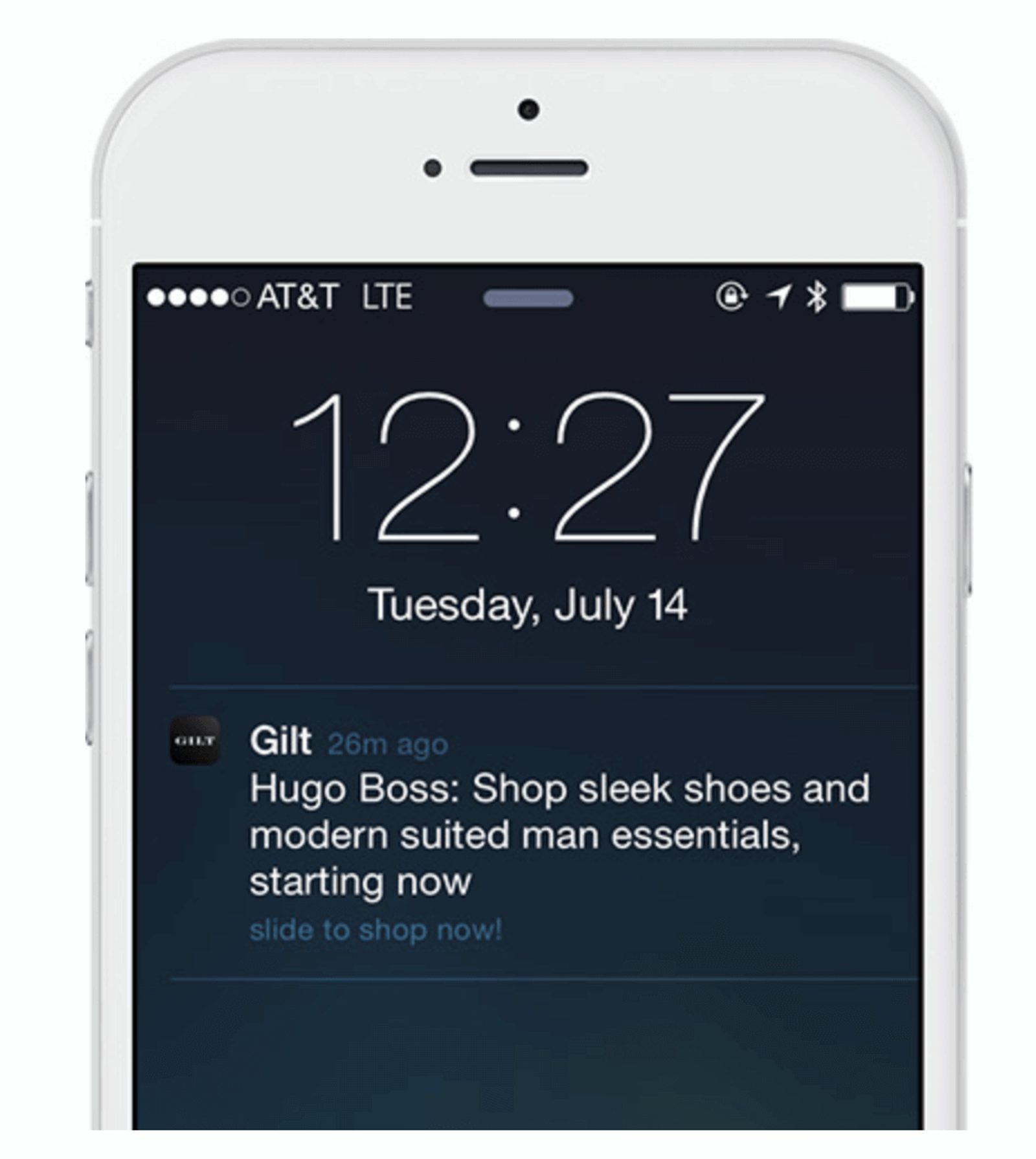
The push notification is a CTA (“slide to shop now”). The user is already familiar with Gilt, and the company uses past interactions (which indicated an interest in Hugo Boss) to deliver a specific path to conversion.
4. Banana Republic grows with a coupon offer
Clothing retailer Banana Republic leaves no stone unturned when it comes to customer retention. This re-engagement email entices previous customers to shop by offering a 20% off coupon on their next purchase.

This message is clearly for existing customers. The message “come back” reminds the user of their existing relationship, and the offered discount is designed to continue and grow that relationship.
Improve your customer lifecycle to grow your business
Understanding what consumers need makes it easier to grow your business. Understanding the customer lifecycle helps you reach the right people with the right message at the right time. Work with your team to create marketing campaigns based on the customer lifecycle to increase your customer retention.
You can get started sending the right message to the right people with a 14-day free trial of ActiveCampaign right now!



